This short tutorial will guide you through using Rosemary, a faceted search-style filtering tool for Yasgui.
Step 1: Access Rosemary
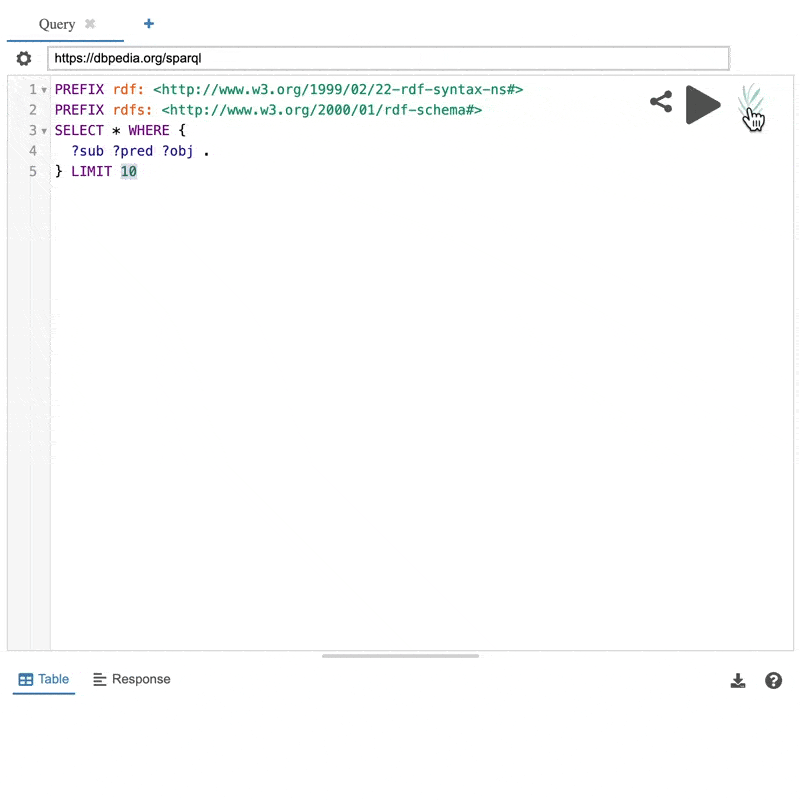
Navigate to Yasgui-with-rosemary in your browser (Chrome recommended). This is a special version of the SPARQL editor Yasgui which comes bundled with Rosemary. Click the Rosemary icon in the top right to open the sidebar, which will slide in from the right.
Step 2: Enter a Data Source
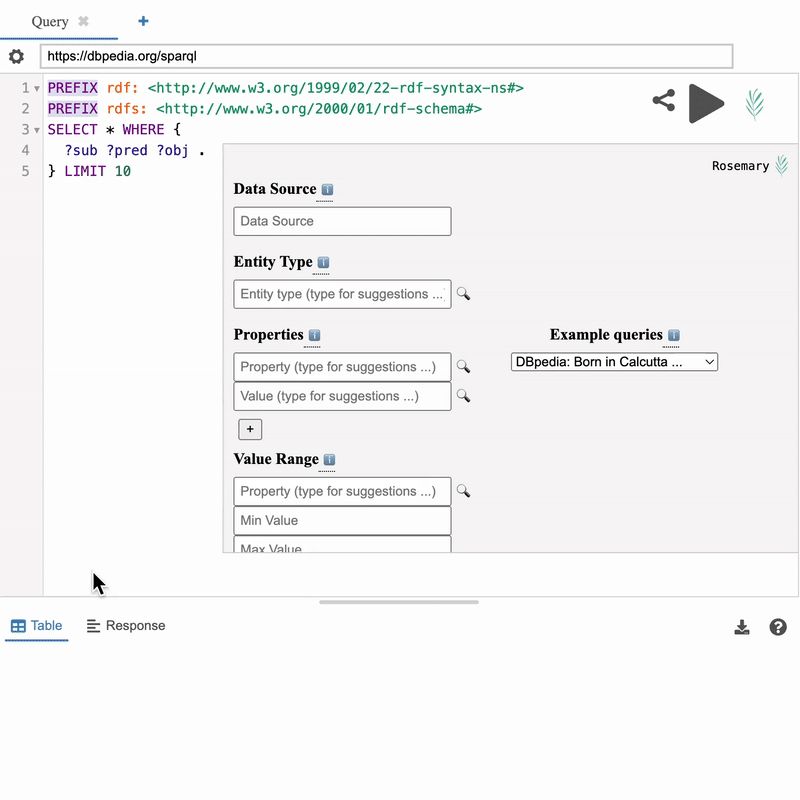
In the Data Source textbox enter the URL of a Linked Data source (sometimes called a SPARQL endpoint). Ensure that you paste the correct URL here (some SPARQL endpoints are only accessible over HTTPS and not HTTP for example). Here is a non-exhaustive list of open data sources maintained by Wikidata. Keep in mind that some of these might no longer be accessible or active.
Step 3: Fill out some filters
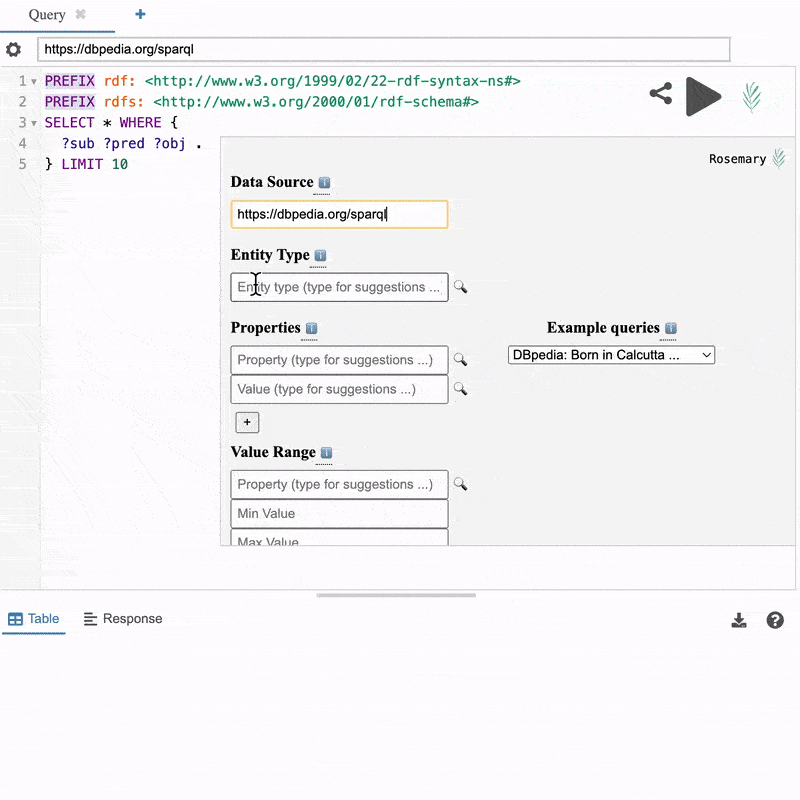
Use filters to refine your search. Rosemary provides four types (examples from DBpedia):
- Entity Types (e.g., Person, Place, Company)
- Properties (e.g., the birth place property filters entities by birth location. To find people born in Calcutta, use Calcutta as the value which is, itself, an entity in DBpedia).
- Value Range – Unlike the properties filter, this assumes the property's value is a literal (e.g., a number or date). Specify a min and max value to filter results. For example, find people born between 1900 and 1945 by setting birth place as the property, 1900-01-01 as the min, and 1945-01-01 as the max. Ensure the correct data type (e.g., Date) is selected.
- String Match (e.g., filter by names of persons or abstracts of books using regular expressions, like names starting with a specific letter or abstracts containing specific words or phrases).
Filters are optional, but all fields must be filled for them to apply. A 🔍 icon means autocompletion—start typing for suggestions; otherwise, enter values manually. Example queries are available in the dropdown near the Properties filter. The SPARQL query updates dynamically as you adjust filters; add multiple filter instances using '+' buttons.
Display Properties lets you choose which properties of matched entities to show. For example, if filtering for persons born in Calcutta, you can choose to display their birth dates and spouses. Max # of results limits the number of returned results.
Step 4: Executing Queries
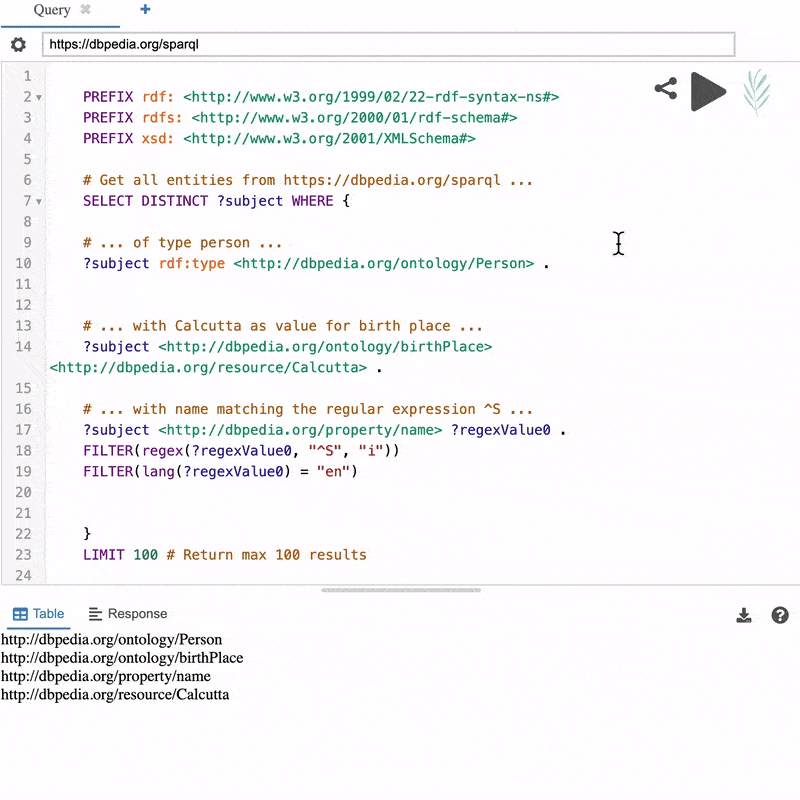
Once you have selected your filters, click on Run Query. Yasgui will execute the query on the selected data source and return the results in the pane at the bottom of the page.
For Developers
Technical assumptions
Rosemary assumes that:
- The names of resources (properties, classes etc.) in the data source you are querying have a string label indicating their human-readable name and...
- This label is indicated by an rdfs:label property and...
- There is an English or "en" language tag for this label
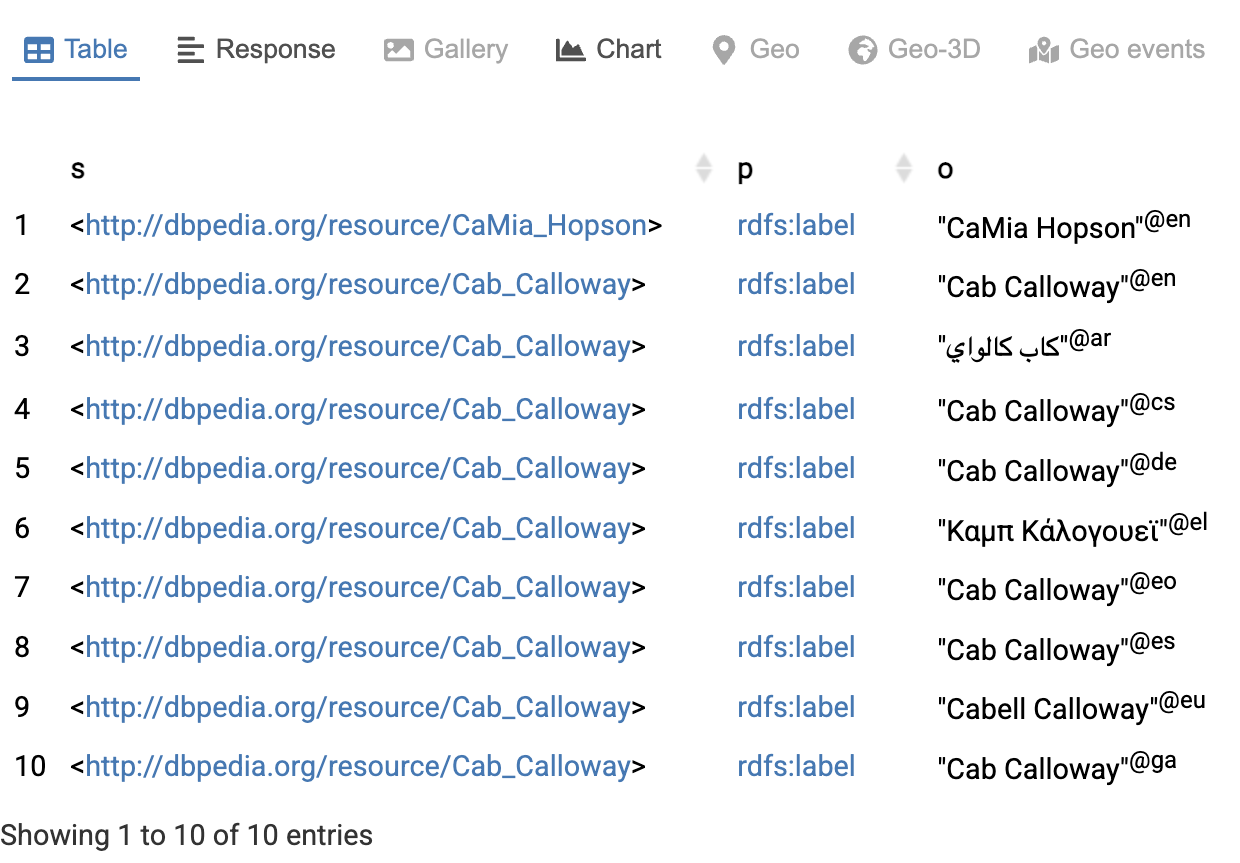
If you are unsure what these assumptions mean or whether a particular data source meets these criteria, contact the purveyors of that data source or ask a colleague familiar with Linked Data technologies to verify this for you.
Rosemary will work better on data sources that assign unique human-readable labels for each resource. If a particular store does not adhere to this, it means distinct resources in the data source share the same human-readable name. Duplicate names will show up in autocompletion results and it will not be possible to distinguish between such resources from the interface.
Performance issues
When searching large data sources (such as DBpedia) for the first time, it is expected that Rosemary can take a while (up to a minute or two for some queries, depending on your internet connection) to generate autocompletion suggestions. This issue will improve with continued usage if your browser has caching enabled.
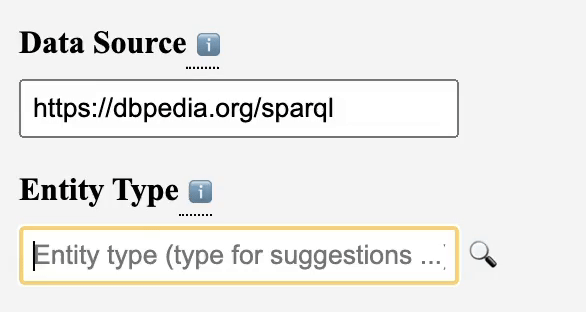
We are considering ways to improve the user experience by doing upfront pre-calculation of the lists of available properties and types in the Data Source. This would make the initial loading time longer but will make subsequent filtering much quicker.
You're Ready to Explore!
Using Rosemary, you can construct complex SPARQL queries without writing a single line of code. Try different filters and explore your dataset!
Try it Now